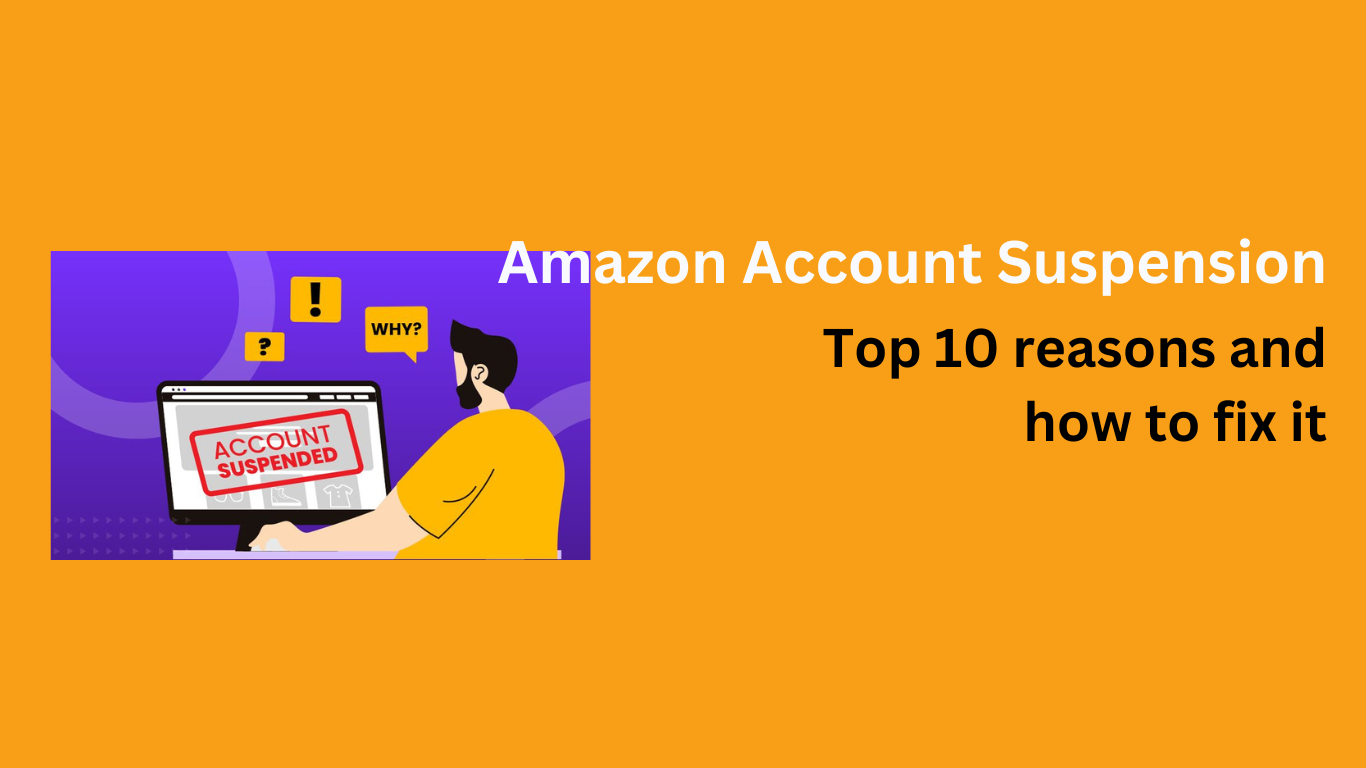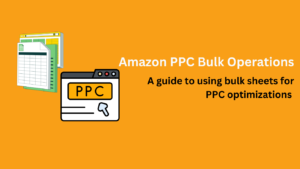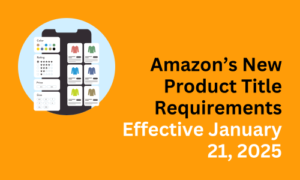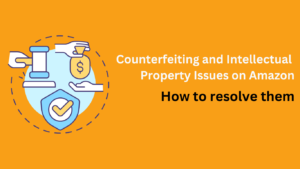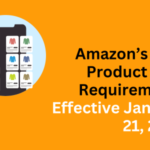Amazon account suspension is one of the most challenging setbacks an online seller can face. With strict policies designed to protect customers and ensure marketplace integrity, Amazon doesn’t hesitate to take action against sellers who fail to comply with its guidelines. Whether it’s due to inauthentic items, late shipments, or policy violations, a suspension can disrupt your business and impact your revenue. However, understanding the common reasons behind suspensions and implementing proactive measures can help you safeguard your account and thrive on Amazon’s competitive platform. Let’s explore the top 10 reasons for Amazon account suspension and how to avoid them.
1. Inauthentic Items
Amazon’s commitment to customer trust means it takes counterfeit and inauthentic products seriously. If a customer or competitor reports your product as fake, Amazon may demand proof of authenticity through supplier invoices, purchase receipts, or authorization letters. Failure to provide these documents can lead to Amazon account suspension.
Example:
A seller unknowingly sources branded products from a third-party distributor who isn’t authorized by the manufacturer. Customers report discrepancies, and Amazon suspends the account.
How to Avoid It:
- Work only with verified suppliers and distributors.
- Maintain detailed records, including invoices, receipts, and supplier contact details.
- If sourcing from overseas, ensure compliance with import and customs regulations to avoid red flags.
2. Negative Feedback
Amazon tracks seller performance metrics, and excessive negative feedback can damage your account health and lead to Amazon account suspension. Issues like product defects, poor customer service, and inaccurate descriptions often result in complaints.
Example:
A seller promises “premium quality” in their product title, but customers receive a poorly manufactured product. This leads to multiple 1-star reviews and account investigation.
How to Avoid It:
- Regularly review customer feedback and address concerns promptly.
- Use automated tools to request removal of invalid negative reviews.
- Offer proactive customer service to resolve issues before they escalate.
3. Selling Prohibited Products
Amazon has a strict list of restricted and prohibited items, such as weapons, unapproved supplements, and certain chemicals. Selling such products can result in immediate Amazon account suspension and even legal repercussions.
Example:
A new seller lists a dietary supplement containing an ingredient banned by Amazon’s policies. The listing gets flagged, and the account is suspended.
How to Avoid It:
- Study Amazon’s restricted products policy in your category.
- Conduct thorough research before listing new items.
- For supplements, provide necessary certifications and test results to Amazon if required.
4. Used Items Sold as New
Selling used items while listing them as new is a violation that directly impacts customer trust. Complaints about receiving opened or damaged items can lead to immediate action from Amazon.
Example:
A seller acquires returned items in bulk and lists them as new, assuming customers won’t notice. Complaints flood in, triggering a suspension.
How to Avoid It:
- Clearly label used, refurbished, or open-box items.
- If reselling returned products, repackage them professionally and disclose their condition.
- Utilize Amazon’s “Renewed” program for refurbished items.
5. Opening a New Account After Amazon Account Suspension
When Amazon suspends an account, creating a new one without resolving the underlying issues violates its policies. Amazon’s algorithms are adept at detecting linked accounts, even through shared IP addresses or banking details.
Example:
A seller, frustrated by delays in reinstating their account, opens a new one using a different email. Amazon identifies the connection, leading to both accounts being permanently banned.
How to Avoid It:
- Focus on resolving the suspension by submitting a detailed Plan of Action (POA).
- Never attempt to circumvent the suspension by opening another account.
- Consult experts to guide you through the appeal process.
6. Selling Counterfeit Items
Counterfeit products are not only a violation of Amazon’s policies but also illegal. Amazon’s detection systems and customer reports can quickly flag and remove counterfeit listings.
Example:
A seller lists designer handbags from an unverified supplier. After multiple complaints, Amazon removes the listings and suspends the account.
How to Avoid It:
- Authenticate all inventory before listing it on Amazon.
- Register with Amazon’s Transparency Program to validate product authenticity.
- Work with suppliers who have a proven track record.
7. Duplicate Accounts
Amazon allows only one seller account per individual or business unless explicitly approved. Operating multiple accounts without approval can lead to suspension of all linked accounts.
Example:
A seller creates additional accounts to sell in different categories without approval. Amazon’s systems detect the violation and suspend all accounts.
How to Avoid It:
- Request explicit approval for multiple accounts if you have valid business needs.
- Ensure distinct operations for each account, such as separate inventory and bank details.
- Avoid logging into multiple accounts from the same device or IP address.
8. Late Shipment Rate
Customers expect timely delivery, and Amazon requires sellers to meet strict performance metrics. A high late shipment rate not only leads to dissatisfied customers but also increases the risk of suspension.
Example:
A seller manually fulfills orders but faces delays during peak seasons, leading to multiple late deliveries and account warnings.
How to Avoid It:
- Use Amazon’s Fulfilled by Amazon (FBA) service for efficient order processing.
- Monitor your fulfillment metrics regularly and address potential delays proactively.
- Set realistic shipping timelines and buffer periods during busy seasons.
9. Not as Advertised
Amazon customers rely on accurate product descriptions. Misleading information, missing details, or exaggerated claims can result in negative reviews, returns, and policy violations.
Example:
A seller lists a phone case compatible with all models, but customers find it fits only specific ones. Complaints lead to listing removal and suspension.
How to Avoid It:
- Use precise language in your product descriptions.
- Include accurate dimensions, features, and compatibility information.
- Regularly update your listings to reflect any product changes.
10. Rights Owner Notice Complaints
Amazon’s policies protect intellectual property owners. If a brand files a complaint against your listing for trademark or copyright infringement, your account could be at risk.
Example:
A seller uses images from a competitor’s website without permission. The competitor files a complaint, leading to listing suspension.
How to Avoid It:
- Use only original images, descriptions, and branding.
- Obtain written permission to sell branded products.
- Register your own brand with Amazon Brand Registry to protect your intellectual property.
What to Do If Your Account is Suspended
Account suspension is not the end of your journey—it’s a challenge that can be resolved with the right approach. Here’s a step-by-step guide:
Identify the Issue: Read Amazon’s suspension notification carefully to understand the reason.
Draft a Plan of Action (POA):
- Include specific corrective measures for the issue.
- Detail the steps you’ll take to prevent future violations.
Submit an Appeal: Use Amazon’s Appeal Portal to submit your POA. Be professional and concise.
Seek Professional Help: If your appeal is rejected, consult agencies like Active Seller Hub for expert assistance.
Final Thoughts
Amazon’s policies ensure a safe and reliable shopping experience, but navigating them can be challenging. By understanding the top reasons for account suspensions and proactively addressing potential issues, you can safeguard your business.
At Active Seller Hub, we specialize in helping sellers maintain compliance and resolve suspensions. Protect your Amazon business by staying informed, prioritizing customer satisfaction, and following best practices. With the right approach, you can build a thriving and resilient business on Amazon.

